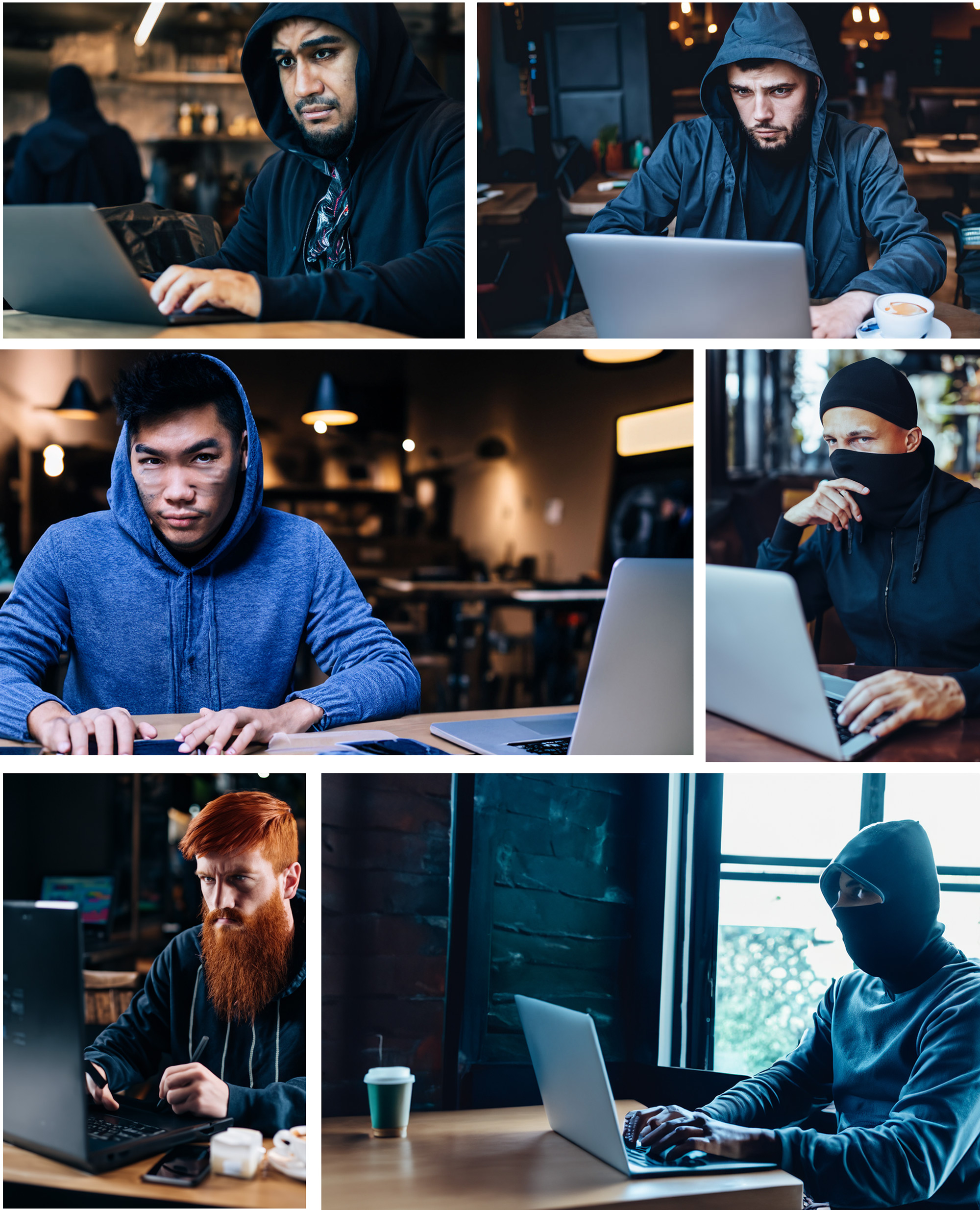







Saved images can be adapted and reused solely for non-commercial purposes with attribution per CC BY-NC 4.0 License.
For attribution, please provide a link back to this website https://myothercomputer.com.
For commercial reuse, please visit My Other Computer CC-BY-4.0 Edition.
Exported image size:
Saving Image...
Did you ever see a bumper sticker on a car with a quirky saying like "My other car is a space ship?" or airplane, or horse, or Chevy?
This is a play on that idea, only the person in these cartoons is telling you -- the viewer, that THEIR other computing device is YOUR computing device.
In other words, they have hacked into something that belongs to you and have full control over it.
Or as they say in hacker speak, "You've been pwned", "owned", "rooted" or some such.
Why should I care?
Once a malicious attacker has access to your personal devices, they can do all kinds of things:
And much more !
You may think you don't have anything worth stealing until you realize how connected all of your accounts and data are to your personal email. Not to mention everything saved to your phone or laptop, and how much you probably rely on technology to go about your daily personal and professional business.
In the old old days (like 10... 15 ... 20 years ago??), a "computing device" was more limited... to well... A COMPUTER!
But now all kinds of electronic things use "smart technology", often networked to the outside world for your convenience and interconnectivity.
However, this also makes all of these "smart" devices vulnerable to being accessed or abused by some malicious person.
There have been many reported cases of people gaining access to all sorts of things such as: Smart TVs, Baby Monitors, Web Cams, SLR Cameras, Cars, embedded health monitors like insulin pumps and pacemakers, not to mention traditional computing platforms used in business such as servers, databases, public and private cloud services, and even personal home wireless routers which are the entry and exit point of all traffic from your home to the Internet.
The "hackers" in these images are peering out from behind their devices. Their eyes are smiling, but on closer inspection, they are always watching and observing, looking for opportunities to exploit those around them.
The genesis of this project was a challenge from OpenIDEO and the Hewlett Foundation to redefine the way that "hackers" are depicted in the media and popular culture. Most often, "hackers" are shown as white males in their early 20's, or some shadowy guy in a hoodie.
In reality, "hackers" are comprised of a multitude of diverse people from all ages, genders, cultural backgrounds, and ethnicities. Even the term "hacker" is misleading as a hacker originally was simply used to describe a person with an aptitude for computers.
HACKER = tinkerer, computer geek, nerd
Malicious hackers who use technology for illegal acts and criminal financial gain also come in all shapes and sizes.
MALICIOUS HACKER = A criminal
This project was created to provide an updated visual reference depicting how malicious hackers can look like anyone. They might even be the person you least suspect.
Absolutely !
Click the save button to save a higher resolution local copy of any generated image.
For creative types, there is a green screen background which can be removed to add your own, as well as a blank sticker to add your own words.
Saved images can be used for non-commercial purposes with attribution in accordance with CC BY-NC 4.0.
If you have a commercial use in mind, please visit My Other Computer CC-BY-4.0 Edition which does not use generated faces and can be used for commercial projects.
For attribution, please provide a link back to this website https://myothercomputer.com.
Please note there are two editions of My Other Computer
CC-BY-4.0 Edition : There are no AI generated faces and can be used for non-commercial and commercial reuse.
CC-BY-NC-4.0 Edition : Uses AI generated faces which can only be reused for non-commercial purposes. If you have a question on what that means, see the Creative Commons non-commercial wiki page.
Weird how? Besides the fact that they are floating heads being swapped into a random background with unmatched hands?
Otherwise, your keen eye and intuition are not wrong. They should look odd!
These faces were derived from computer generated people from the website : "This Person Does Not Exist" (which is based on Nvidia / StyleGAN).
In other words, they are non-existent Artificial Intelligence generated people made to look like real human people.
In 2019 when this was first created, these fake people still looked a little strange. Their eyes are sometimes wonky, and the hair shape is not always natural.
At present, despite the occasional extra fingers or pixel glitches, the lines are further blurred between real and fake people in photographs, audio recordings, and even video.
Much like how "Phishing" emails trick people by making them think an email is from someone they trust, in the future, we will all need to become more discerning about what we see and hear -- and more importantly what they are asking from us.
When I created this little project in 2019, the idea of AI generated people was still unknown territory.
Fast forward five years and we can now easily make photorealistic images, videos, and audio of fake people with a simple text prompt.
In a sense, this whole project is irrelevent if you can simply type, "Hacker with computer", to create a perfect image.
However, given that the AI was trained on the silly depiction of hackers in the past, you are still more than likely going to get images of shady people in hoodies, which was the original motivation for this project in the first place.
Don't believe me? Here's a few I just generated with the prompt, "a shady hacker typing on a laptop in a cafe". See any simalarities?


If you've learned anything so far, these images are a poor representation that malicious hackers come in all shapes and sizes. Before and after the age of generative AI.
In fact, the next malicious hacker you encounter may not even be a person at all.
Original concept, design, and website creation by Jason Kravitz.
All inquiries : myothercomputer @ protonmail.com
I was honored to get a shout out from Cory Doctorow for this project. Cory's tireless crusade against enshittification, corporate greed, surveillance capitalism, and all manner of technological fuckery, is essential reading for all.
Read more information about the original OpenIDEO Cyber visual challenge brief.
All photos and art assets were created by Jason Kravitz with the exception of:
Faces were generated using the website This Person Does Not Exist
CSS Loader generated at Loading.io
Image download website code by Eli Grey FileSaver.js (MIT license)